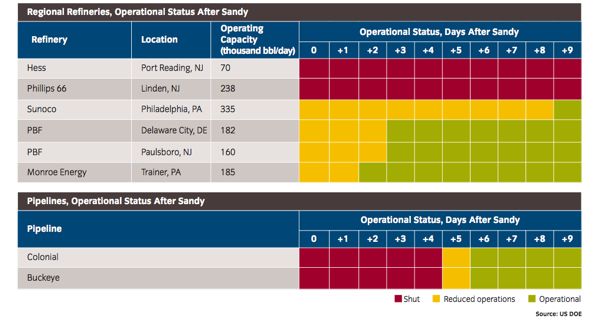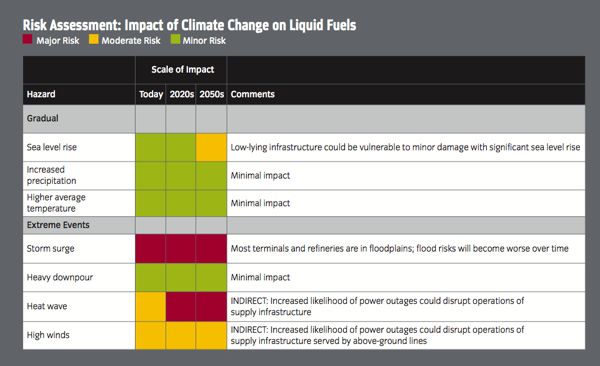Gov. Christie’s Climate Denying Coastal Management Rule Must Be Blocked By The Legislature
Legislators Now Understand That Sandy Recovery Was Bungled
The Same Crew Is Bungling Regulations
Legislature Has Power To Veto Christie Rules as “Inconsistent with Legislative Intent”
[Update #4: 7/9/14 – See Asbury Park Press story: Critics make last pitch against NJ coastal rules
Watch NBC TV 40 coverage of the final public hearing on the rule – end update
Update #3 – 7/6/14 – Here’s an amazing coincidence – this superb Washington post story on North Carolina coastal/sea level rise – climate change debate ran June 24, 2014, the same day as this post. Just reading it now as a link to this NY Times piece on science “When beliefs and facts collide” – end update.]
Update #2: 6/29/14 – Star Ledger editorial gets it and nails Gov. Christie, but gies legislature a pass, see:
Update #1: 6/26/14 – Press coverage of first public hearings on proposed rule is good, see this from AP. Glad to see Tim D. speak out. -end update]
Back on June 4, 2012 (prior to Sandy), national comic Steve Colbert absolutely nailed it in skewering North Carolina Republicans, who advocated State legislation that would outlaw consideration of sea level rise due to global warming – watch Colbert’s June 4, 2012 “Word” – Sink or Swim
If science gives you a result you don’t like, pass a law, problem solved.
The NC law targeted the Coastal Commission, who, among other things, regulates land use and development in the coastal zone.
While NJ doesn’t have a Coastal Commission – a bill to create one died last session and Coastal advocates strangely are not supporting this session’s bill – NJ does have DEP Coastal Zone Management regulations and a law use law known as “CAFRA” (Coastal Area Facilities Review Act).
While the CAFRA law is riddled with loopholes – including the poison provision known as the “right to rebuild” storm damaged properties, which virtually assures perpetual repetition of coastal chaos like Sandy – IF the DEP Commissioner had the will to do so, there are other NJ State environmental laws that could be cobbled together under a CAFRA umbrella to support stronger regulations that would reduce the risks of climate change along the coast and better protect natural resources.
The corollary to Colbert’s “just pass a law” to block consideration of climate change is “just ignore the science and the problem” – the result is exactly the same.
Which takes us to the situation in Chris Christie’s NJ – which is actually worse than the North Carolina case, which received national ridicule.
While North Carolina’s Republicans affirmatively outlaw consideration of climate change, Gov. Christie’s administration blatantly ignores it and fails to include it in coastal management programs, policies, and regulations.
But what actually makes the NJ scenario worse than North Carolina is that the people of NJ are being strongly urged by Gov. Christie to rebuild in coastal hazard zones and the State government is using all its resources, policies, and regulations to incentivize that “rebuild madness”.
All of which takes us to the topic of this post, just the most recent example of Gov. Christie’s irresponsible climate denial I have called “rebuild madness”.
The Christie DEP just proposed new Coastal Zone/CAFRA regulations. The first of 3 public hearings on them begin tomorrow.
Jeff Tittel of Sierra Club wrote a killer Op-Ed on the rules in today’s Press of Atlantic City – read the whole thing:
The Department of Environmental Protection has proposed new rules to regulate development on our coast for the first time since Hurricane Sandy. Instead of looking to strengthen coastal protections and encourage more regional planning, these rules propose more loopholes and further weaken coastal protections. They do not address climate change or sea-level rise, coastal resiliency or restoring natural systems.
These rules would eliminate protections for our coast, allowing more sprawl and overdevelopment and putting more people and property in harm’s way.
In addition to the devastation from Hurricane Sandy, New Jersey has experienced storm surges and sea-level rise at an alarming rate. Instead of moving New Jersey forward to mitigate against these climate impacts, we are instead opening our coast up for more development in these hazardous areas.
What Tittel did not mention is that the Legislature has the Constitutional power to veto this reckless Christie rule proposal as “inconsistent with legislative intent”.
It is critically important that they do so, because the DEP rules would be in effect for at least 7 years – over that period of time, an enormous amount of new development could be built in harm’s way, not only wasting billions of taxpayer dollars, but putting thousands of people’s very lives at risk.
The legislative veto- unlike yesterday’s failed effort on the “Sandy Bill of Rights” – would not require super majorities needed to over-ride the Gov.’s veto.
A mere majority vote in favor of a Concurrent Resolution in both Houses would do. The Democrats have majorities in both Houses and could readily veto the Gov. coastal rebuild a scheme.
Ironically, it took 18 months for Legislative Democrats to realize that the Sandy recovery was badly bungled. Well, that same crew is in charge of regulations, and we can expect similar disastrous results we saw in oversight of Sandy recovery.
So, in closing, let me briefly outline how to make this legislative veto “inconsistent with legislative intent” argument. Follow.
The lawyers at DEP have a bag of strategies and tools to justify and defend DEP rules from legal and political attack. One of the most important tactics is found on the cover page of all rule proposals, known as the “Authority” – as in statutory authority – to propose the rule.
If DEP lawyers anticipate an attack on the DEP’s legislative authority to propose a rule, then they trot out a very long list of statutes that allegedly authorize a rule, including the very broad mandate under DEP’s enabling or “organic” authority, the statute that created DEP, NJSA 13:1D.
If DEP proposes a rule that creates new requirements that stray beyond the scope of a specific statute and could be vulnerable to challenge, then DEP lawyers are sure to include related statutes.
A good example of this was DEP’s new “stream encroachment” regulations authorized under the Flood Hazard Act. That law, and the historic DEP stream encroachment regulations focused on flood risks. But DEP’s new rules expanded that focus to include water quality. Because of that expanded scope, DEP lawyers were sure to include a suite of water pollution/water quality laws.
And if a DEP rule creates an entirely new controversial program or policy, DEP lawyers are sure to cite virtually every environmental law on the books. The most recent example of this was the Christie “Waiver Rules”, where dozens of laws were cited as the “authority”.
The lawyers at OLS, who advise the Legislature, are no less sophisticated in making arguments to take down the DEP rule as “inconsistent with legislative intent”.
The DEP rule in question cites 3 laws as “authority”: N.J.S.A. 12:3-1 et seq., 12:5-3, 13:1D-1 et seq., 13:9A-1 et seq., and 13:19-1 et seq.
But DEP forgot all about NJ’s most important State law to guide coastal management: the Global Warming Response Act (GWRA).
This failure is simply incomprehensible and intolerable in a post Sandy coastal management regulation.
Here are some of the relevant findings of the GWRA that relate to coastal risks of climate change:
The Legislature finds and declares the internationally the issue of global warming has caused alarm, awareness, and action concerning climate changes occurring around the globe attributed to the high level of certain gases called “greenhouse gases” – gases that increase temperatures in the atmosphere and the risk of catastrophic changes to the Earth’s ecosystems and environment; that, while this global warming may be a theory to some, the effects of increasing levels of greenhouse gases in the atmosphere are accepted by many respected scientists and members of the international community as seriously detrimental to the ecosystems and environment of the world; that, ultimately, if steps are not taken to reverse these trends, the effects on human, animal and plant life on Earth may be catastrophic;
The GWRA also included a mandate that DEP submit a Report to the Legislature outlining a plan on how to implement and meet the goals of the GWRA.
In December 2009, the DEP submitted that Report to the Legislature, see: Meeting New Jersey’s 2020 Greenhouse Gas Limit: New Jersey’s Global Warming Response Act Recommendations Report
Here is one of the most relevant DEP recommendations from the GWRA Report that has been totally ignored and/or violated by the Christie DEP for 5 years and by the current CAFR rule proposal:
Adaptation
Despite our best efforts to mitigate climate change in New Jersey, we must recognize that emission reductions alone are not a sufficient policy response to climate change. Once emitted, CO2 and other GHGs reside in the atmosphere for decades or centuries.10 Even if all GHG emissions were stopped immediately, there would still be a time lag between mitigation of emissions and cessation of warming. Because of New Jersey’s uniquely diverse terrain, nearly all the impacts of climate change, from rising temperatures in our urban areas to sea level rise jeopardizing our coastal ecosystems to threats to our unique agricultural industries, will be experienced throughout the State. Each of these impacts threatens the public health of New Jersey residents, as well as the ecology and economy of State.
This report recommends that the State develop adaptation strategies to minimize climate-related risks to public health, the environment and the economy. The report recommends that experts from academia, government, non-governmental organizations, and the business community develope policy recommendations on the most pressing adaptation policies New Jersey should adopt to significantly reduce the State’s risks from climate change impacts. By bringing together various constituencies to develop a statewide climate change adaptation plan, New Jersey can be proactive in fostering adaptive capacity in the built and natural environment and public health infrastructure statewide to respond to climate change.
Therefore, because the DEP proposed new coastal management rules:
- ignore climate change science and the associated risks of more frequent and intense coastal storms and sea level rise;
- contradict the policies and legislative findings expressed in the GWRA, and
- ignores DEP’s own recommendations on adaptation;
the DEP rule is inconsistent with legislative intent.
The Legislature must step up and veto this rule proposal.


